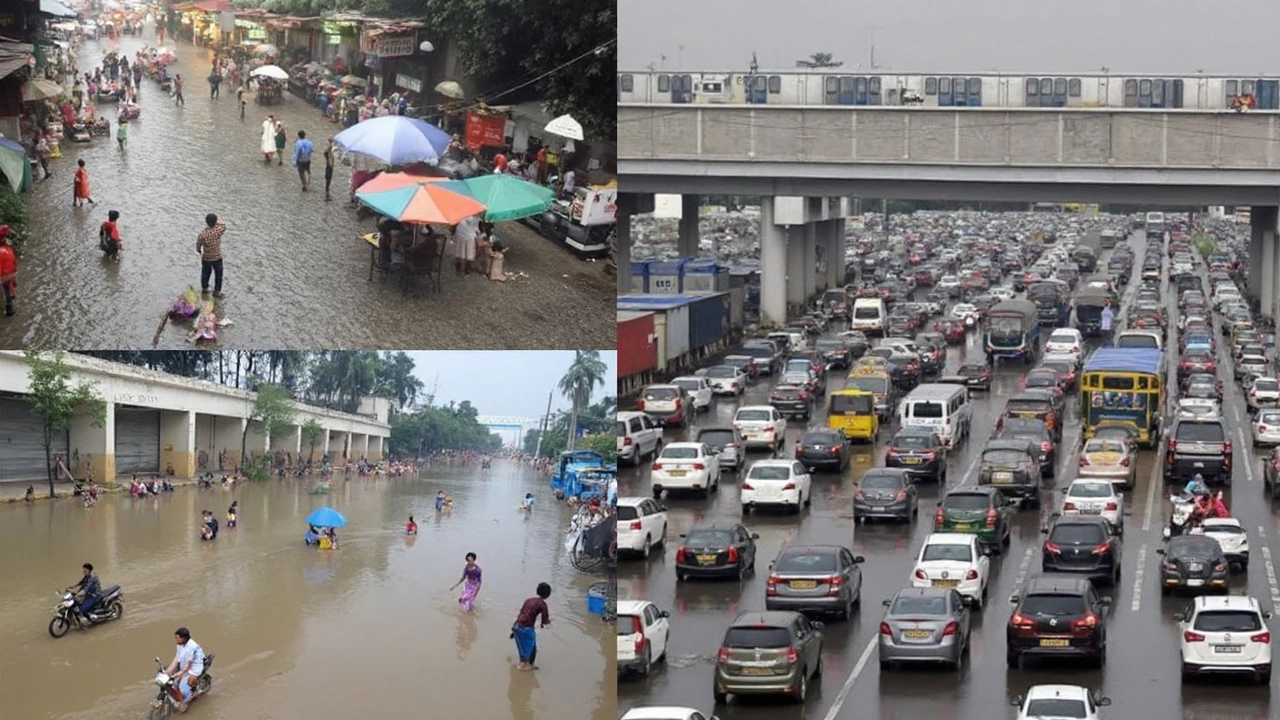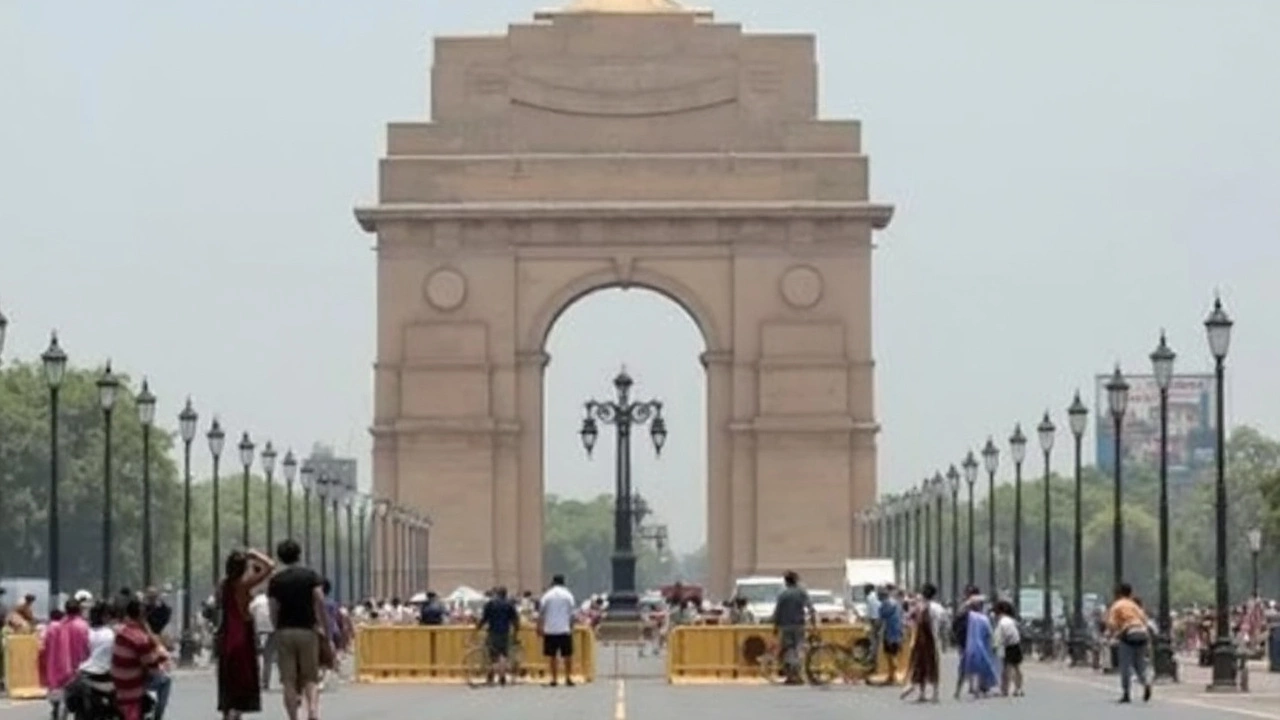Heavy Rains Wreak Havoc in Delhi-NCR: Streets Flooded, Traffic at Standstill, Air Turns Cleanest in Years
 Jul, 31 2025
Jul, 31 2025
Downpour Turns Delhi-NCR Into a Waterlogged Maze
On July 31, nature hit pause on the daily hustle in Delhi-NCR. Torrential rain, exactly as the India Meteorological Department (IMD) had warned with its forecast of thunderstorms and wind gusts up to 40 km/h, arrived in force. What followed was a real test for the city’s infrastructure.
If you were out and about that morning, there was no way to miss the chaos. Cars stalled in knee-deep water, two-wheelers bobbed at the edges of roads, and pedestrians waded through unexpected rivers. The worst-hit spots? Busy corridors like ITO, Mehrauli-Gurgaon Road, Delhi-Meerut Expressway, Yamuna Expressway, and notorious underpasses at Zakhira and Azad Market. Daily commutes turned into long ordeals, with gridlock capturing Nehru Place, Dhaula Kuan, Connaught Place, and more.
Anyone driving along the Delhi-Meerut or Yamuna Expressways faced the brunt: vehicles barely moved, caught for hours, tires submerged. Social media filled with video after video of flooded city landmarks and stranded commuters, frustration written on every face.

Rain Brings Relief From Heat—And Pollution—But Leaves City Exposed
This July, Delhi saw 235.2 mm of rainfall, smashing through the city’s average of 209.7 mm. Since June 1, the city has soaked up a whopping 337.2 mm of rain, much more than the usual monsoon average of 270.1 mm. Sure, the deluge cooled things off—nights slipped into the 23-25°C zone, and days stayed a lot less scorching at 30-32°C. Residents often complain about the swelter in July, but this year, umbrellas replaced sweat towels.
Ironically, the rainstorm also served up a breath of fresh air. July 2025 brought the cleanest air the city has seen in over ten years. The Air Quality Index (AQI) dipped below 50 in many neighborhoods—something Delhi folks rarely get to brag about. With the muddy water came a washout of dust and pollution, as nature basically hit the ‘refresh’ button on the city’s air.
Still, any celebration felt short-lived for those trapped in traffic or dealing with flooded homes. The government scrambled as criticism mounted over the city’s poor drainage networks. Waterlogging proved uneven: some places stayed clear, while others were swamped for hours. The ITO intersection drew especially close scrutiny, prompting emergency inspections and urgent talk of better drainage—again.
The IMD isn’t sugar-coating things, either. More storms are expected from August 1 to 3, so Delhi’s not in the clear just yet. While city officials hurriedly ordered patchwork solutions for the biggest hotspots, social media was quick to point fingers at years of half-baked urban planning. The message was loud: floods are no longer just a monsoon nuisance but a wake-up call for fixing the basics.
Delhi’s rainy day story is packed with drama—some relief, some wins for clean air, but mostly people just want their city back in working order. And as the rain clouds linger, one thing’s certain: this wet spell won’t be forgotten anytime soon.